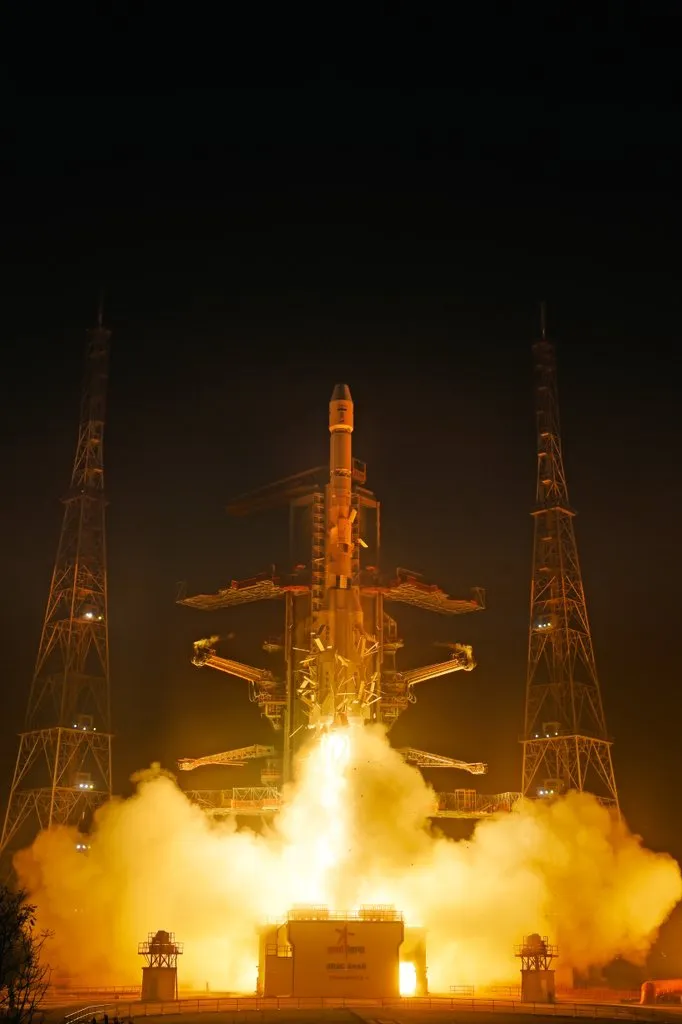The Indian Space Research Organisation (ISRO) has marked a historic milestone with the successful launch of its 100th mission. The Geosynchronous Satellite Launch Vehicle (GSLV-F15) carrying the NVS-02 satellite took off on Wednesday at 6:23 AM from the Satish Dhawan Space Centre in Sriharikota, Andhra Pradesh. This launch not only highlights ISRO’s growing capabilities in space technology but also strengthens India’s satellite-based navigation system.
NVS-02 Satellite Strengthens NavIC System for Improved Navigation Accuracy
The NVS-02 satellite will significantly boost India’s Regional Navigation Satellite System (IRNSS), commonly known as Navigation with Indian Constellation (NavIC). With the addition of this satellite, the number of operational satellites in the NavIC constellation will rise from four to five, improving the precision of positioning services across India and its neighboring regions.
ISRO’s Space Applications Centre (SAC) Director Nilesh Desai shared, “This mission will place the NVS-02 satellite in geostationary orbit at 36,000 kilometers, enhancing the overall accuracy of positioning services provided by NavIC.”
NavIC, akin to the Global Positioning System (GPS), relies on a constellation of satellites to offer precise positioning. This launch represents the fifth operational satellite in the NavIC series, marking a key step in replacing older satellites to ensure more accurate and reliable navigation services.
NavIC: India’s GPS Enhances Global Navigation and Positioning Accuracy
Former scientist and professor at the Indian Institute of Astrophysics, RC Kapoor, described NavIC as “India’s own GPS.” He highlighted that the system offers precise navigation services not only within India but also up to 1,500 kilometers beyond its borders. Kapoor also underscored the critical role of the seven-satellite constellation in enabling highly accurate positioning across vast regions.
Kapoor further referenced ISRO’s future NISAR project, a collaboration with NASA aimed at advanced Earth observation. This ambitious project is expected to be one of ISRO’s largest and most expensive endeavors to date, reinforcing India’s leadership in space exploration.
India’s Technological Advancements and Self-Reliance in Satellite Navigation Systems
The NVS-02 satellite is fully indigenously developed, showcasing ISRO’s advancements in space technology. Defence scientist W Selvamurthy praised ISRO’s technological strides, from propulsion to payload integration. He emphasized that this achievement demonstrates India’s growing self-reliance in satellite technology and space research.
Selvamurthy also highlighted ISRO’s leadership in space exploration, noting that the agency is on track to play a key role in global space research. The vision of “Viksit Bharat 2047,” aimed at making India a developed nation by its centenary year, aligns with ISRO’s long-term aspirations in space science.
NavIC Services: Reliable Positioning, Enhanced Accuracy, and Future Navigation Prospects
NavIC provides two types of services: the Standard Positioning Service (SPS) for civilian use and the Restricted Service (RS) for strategic purposes. The system offers positioning accuracy within 20 meters and timing accuracy of better than 40 nanoseconds within its service area.
The successful launch of NVS-02 strengthens India’s self-reliance in satellite-based navigation, consolidating ISRO’s position as a global leader in space technology. As ISRO looks ahead to projects like NISAR, this 100th mission underscores India’s growing prominence in space exploration and its future ambitions on the global stage.
Also Read: Budget 2025: Jayant Sinha Proposes Rs 10 Lakh Tax Exemption for Middle-Class


